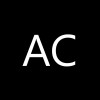Context
Toxic substances called mycotoxins, some of which are produced in the field by fungi belonging to the Fusarium head blight complex, can contaminate cereals. These metabolites are generally fairly resistant to processing and are therefore likely to end up in the finished product (bread, beer, biscuits, etc.). Health effects vary according to the quantities ingested and the type of molecule. Some mycotoxins, such as T2 and HT2 toxins, are potential carcinogens. In response to concerns voiced by the sector (farmers, collectors and millers) and by consumers, and in order to meet European regulations regarding the maximum levels allowed in food, CRA-W has since 2001 been investigating the problem of fusariotoxins (mycotoxins produced by Fusarium) in order to evaluate the extent of the problem and to keep it under control.Objectives
The work aims to draw up an inventory of winter wheat crop contamination levels with deoxynivalenol (“DON” for short), one of the commonest fusariotoxins, identifying the various species of toxinogenic Fusarium found in the grains and collecting meteorological and agronomic data in order to develop a wheat Fusarium head blight risk forecasting model.Results obtained
Ongoing monitoring since 2001 has shown that crops are not necessarily free of DON contamination and that the weather conditions at the flowering stage play a major role in disease development. Among the species of toxinogenic Fusarium generally occurring in the grain, F. graminearum and F. avenaceum are the most frequent. DON contamination risk mapping, based on meteorological data, has been developed at national level. Data collected from weather stations (basic data) and from the IRM radar at Libramont (rainfall data) are processed for application to 1 km2 grids. The calibration indicates the multifactorial nature of the infection and a need to refine the risk calculation.Contribution
Definition of risk factors affecting head blight development in winter wheat fields (e.g., no ploughed maize as preceding crop) Identification of the various fungi responsible for head blight, using microbiological analyses and genetic amplifications (PCR) Determination of the DON level in flours, using a serological test (ELISA) and chromatography (HPLC) Assessment of DON contamination in winter wheat crops at pre- and post-harvest Development of a head blight risk forecasting model based on meteorological and agricultural data Dissemination of the results to farmers’ associationsPartners
Several CRA-W's Research Units take part in this project
Department of Quality and Security Veterinary and Agrochemical Research Centre (VAR – Tervuren)
The complexity of the mycotoxin problem needs a multidisciplinary approach. Therefore, a mycotoxin unit has been formed for gathering all relevant expertise within the CRA-W.
Funding
- SPF Public Health


